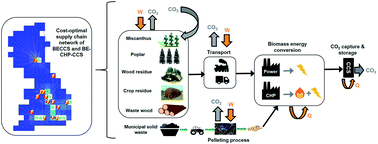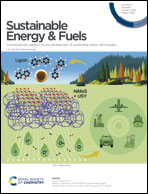Unlocking the potential of BECCS with indigenous sources of biomass at a national scale
Abstract
Bioenergy with carbon capture and storage (BECCS) could play a large role in meeting the 1.5 °C targets, but faces well-documented controversy in terms of land-use concerns, competition with food production, and cost. This study presents a bottom-up assessment of the scale at which BECCS plants – biomass pulverised combustion plants (“BECCS” in this study) and bioenergy combustion in combined heat and power plants (BE-CHP-CCS) – can be sustainably deployed to meet national carbon dioxide removal (CDR) targets, considering the use of both primary and secondary (waste-derived) biomass. This paper also presents a comprehensive, harmonised data set, which enables others to build upon this work. Land availability for biomass cultivation, processing, and conversion is quantified based on a land-use analysis, avoiding all competition with land used for food production, human habitation, and other protected areas. We find that secondary biomass sources provide a valuable supplement to primary biomass, augmenting indigenous biomass supplies. In initial phases of deployment, we observe that infrastructure is initially clustered near cities, and other sources of low cost, secondary biomass, but as CDR targets are increased and indigenous secondary biomass supplies are exhausted, infrastructure begins to move closer to potential biomass planting areas with higher yield. In minimising the cost of CDR on a cost per net tonne CO2 removed basis, we find that the availability of secondary biomass, land availability, and yield are key factors that drive the cost of CDR. Importantly biomass conversion efficiency of a BECCS plant has an inverse effect on CDR costs, with less efficient plants resulting in lower costs compared to their more efficient counterparts. By consuming secondary biomass in BECCS and BE-CHP-CCS plants, the UK is able to be self-sufficient in biomass supply by utilising available indigenous biomass to remove up to 50 MtCO2 per year, though for cost reasons, it may be preferable to import some biomass.



 Please wait while we load your content...
Please wait while we load your content...